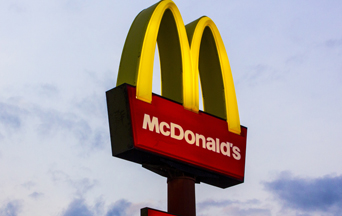
The idea behind fast food is speed and efficiency. When it comes to fast-food chains, McDonald’s is always on the cutting edge of getting people fed quickly—too quickly, some say.
In the rush to gobble down food, much of the joy of eating is lost. Fast food is a soulless commodity that neglects the spiritual appreciation of flavor and taste. It can turn what should be a dining place into a biological fueling station.
The bad news is that it has just gotten worse.
Just when you think the fast-food giant has reached a peak of efficiency, it comes out with something that challenges the existing order of things. These changes supposedly adapt to new consumer demand for speed and efficiency.
The next new thing is called McDonald’s to Go. It has just opened several locations in England including one on the fashionable Fleet Street in the heart of London. It will presumably roll out to other places if it proves popular.
Science Confirms: Angels Took the House of Our Lady of Nazareth to Loreto
The new format strips the bare bones down to the barest bones. No humans are allowed to take the orders of hungry consumers upon entering. Technology dominates everything as interaction with machines is the rule. Promoters call it the best thing since the drive-thru was introduced in the seventies.
What you won’t see at the new McDonald’s to Go are any dining facilities. The new format is exclusively take-out. There are no tables, chairs or any decoration at the locations. The walls are gray and expressionless to get the customer in and out as quickly as possible. Even the storefront outside is bare with minimal signage beyond some small yet familiar golden arches.
 Learn All About the Prophecies of Our Lady of Good Success About Our Times
Learn All About the Prophecies of Our Lady of Good Success About Our Times
Upon entering the cashier-less “restaurant,” a line of touch screens awaits the customer. Even the menu is stripped down to its simplest terms. Only staple items like Big Macs, fries or drinks are found on the listing to avoid complications. The machines predictably only take approved credit cards.
Upon finishing the ordering process, the customers receive receipts and proceed to an equally featureless holding area to wait for their orders. Here, people will see but not talk to their first humans that prepare the orders in the back…for now. It is not too much to suppose that robotic cooks might come in the future.
Eternal and Natural Law: The Foundation of Morals and Law
In the holding area, the person is left to contemplate the straw and napkins station that is the only landmark to break the hyper-efficient monotony. A large monitor keeps tabs on orders and calls people to collect their bagged nourishment.
Even in this streamlined climate, people must wait. While the order is processed, the customer is afforded no comfort. All must stand equally in the desolation waiting for their numbers to be called. Indeed, everyone is fittingly reduced to a number in McDonald’s to Go.
The next phase of the eating experience is the most difficult. It should be the most satisfying since the person must now eat. However, there is nowhere to eat in the establishment, even if standing. The whole project is designed to push people through the system and onto the street. People must eat their meals, “to-go.” Outside the Fleet Street location, there are no nearby benches. The hungry diners in-a-hurry must either eat on the run or wait until finding spots later. The wait seems to defeat the purpose of the faster, more efficient new facility.
Why Treating Everyone Equally Is a Problem
Indeed, speed and efficiency are not the only reason why places like McDonald’s to Go proliferated. The breakdown of the culture includes the eating experience. Dining used to be a time for holding conversations, appreciating dishes and developing manners. It was an intensely social experience, and it took effort to please others.
Today, the social act of eating is dying. In its place is a de-humanizing trend that tends to make people like machines. All the steps of ordering food increasingly leave out human contact. The sites for eating are designed to quicken the process of eating. Fast food and omnipresent screens kill the conversation and culture once found at the table.
Not every meal can be a cultural experience. There will be times when meals will be quick and uneventful. However, places like McDonald’s to Go are designed not to be cultural. They make life boring and mechanical. Human interaction is too much effort for some people. All they want to do is to order, pick up, and leave as quickly as possible when their numbers are called.

